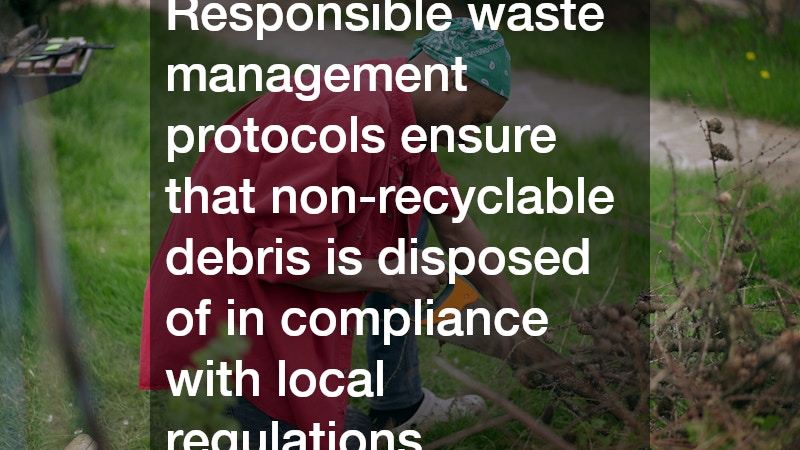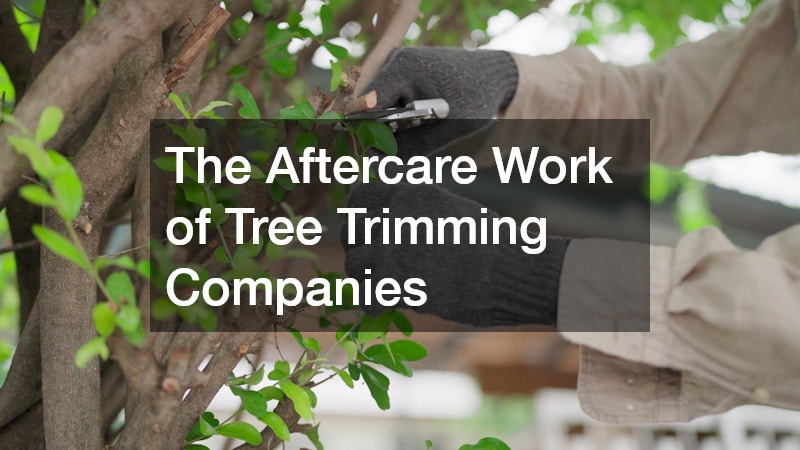Explore the crucial aftercare processes undertaken by tree trimming companies. Understanding these processes not only ensures the longevity and health of your trees but also contributes to the overall aesthetics of your landscape. This article delves into common questions and key topics in tree trimming aftercare.
Why Is Cleanup Important After Tree Trimming Services?
Environmental Impact
The cleanup process after tree trimming is vital to prevent environmental hazards like soil erosion and chemical pollutants. By ensuring that organic waste is managed appropriately, tree trimming companies promote eco-friendly practices that safeguard local ecosystems.
Leftover debris can block waterways and harm infrastructure, leading to broader ecological consequences. Effective cleanup helps maintain balance in urban ecosystems by preventing accidental harm to plant and animal life.
Moreover, a clean environment post-service is less likely to attract pests or diseases that may harm surrounding vegetation. Maintaining a pristine environment ensures the ongoing health of your landscaped areas and supports biodiversity.
Client Satisfaction
Thorough cleanup processes enhance customer experience by leaving the property looking neat and well-maintained after services are rendered. Clients appreciate the attention to detail, which includes not just trimming but also the cleanup afterward, underscoring professionalism and care.
When a tree service concludes without lingering messes or debris, it reflects positively on the company, increasing the likelihood of repeat business and recommendations. This level of client satisfaction is critical in a service industry where word-of-mouth can significantly impact client acquisition.
A spotless work environment creates trust and reassures clients that their landscape investments are being handled with respect and experience. In turn, this trust can lead to long-term client relationships and sustained business success.
What Types of Equipment Are Used in Aftercare?
Safety Gear
Tree trimming companies rely on essential safety gear, such as helmets, gloves, and harnesses, to protect workers during aftercare operations. This equipment minimizes risk and ensures that workers can operate efficiently and safely.
Other critical safety gear includes eye protection and earplugs, shielding workers from potential hazards like flying debris and excessive noise. Prioritizing safety isn’t just a regulatory requirement but a practical necessity for successful aftercare operations.
Proper training in the use of safety gear is as crucial as the equipment itself, ensuring that every team member is playing their part in maintaining a safe work environment. These practices underscore the industry’s commitment to high standards of occupational safety.
Cleanup Tools
Efficient cleanup after tree trimming often involves the use of specialized tools such as leaf blowers, chippers, and rake systems. This equipment is designed to handle the unique challenges of outdoor cleanup and ensure no debris is left behind.
Chippers are particularly valuable as they can reduce large volumes of organic material into mulch, which can then be reused or disposed of more easily. This process not only clears the area efficiently but also contributes to sustainable practices.
How Do Companies Ensure Tree Health Post-trimming?
Assessment Techniques
Aftercare assessment typically involves evaluating the trees for any signs of stress or damage that might have occurred during trimming. Visual inspections and sometimes even photographic documentation are utilized to monitor tree health over time.
These assessments also help in identifying disease symptoms early, allowing for prompt intervention. Early detection is crucial for implementing corrective measures that can mitigate long-term damage to the trees.
Nurturing Practices
Nurturing practices post-trimming involve watering, fertilizing, and sometimes even applying specific treatments to promote tree recovery and growth. Proper care at this stage can significantly impact a tree’s long-term health and aesthetics.
Fertilization replenishes the nutrients lost during trimming, while mulching helps retain soil moisture and moderate temperature. These practices foster an optimal environment for recovery, ensuring that trees remain robust and healthy.
What Are the Disposal Methods for the Removed Tree Debris?
Recycling and Reuse
Tree debris can be recycled into useful materials such as mulch or wood chips, offering significant sustainability benefits. This recycling process not only discards waste responsibly but also converts it into products that can be reintegrated into the environment.
By turning organic waste into compost, tree trimming companies can support nutrient cycles and promote soil health. These practices champion the concept of the circular economy, reducing the carbon footprint associated with traditional waste disposal.
Waste Management Protocols
Responsible waste management protocols ensure that non-recyclable debris is disposed of in compliance with local regulations. Adherence to waste disposal standards is crucial for minimizing environmental impact.
Tree trimming companies often partner with waste management services to ensure that their disposal methods are environmentally sound and efficient. Engaging with third-party experts provides an extra layer of accountability and experience in managing large volumes of organic waste.
Having clear protocols in place helps tree trimming companies streamline the disposal process, reducing downtime and enhancing operational efficiency. This systematic approach is a testament to the industry’s commitment to ethical and responsible business practices.
Summarize the importance of aftercare work in tree trimming, highlighting how these practices not only support environmental health but also ensure the long-term resilience and aesthetics of trees. Emphasize the ongoing role of tree trimming companies in sustaining healthy ecosystems through responsible aftercare.



